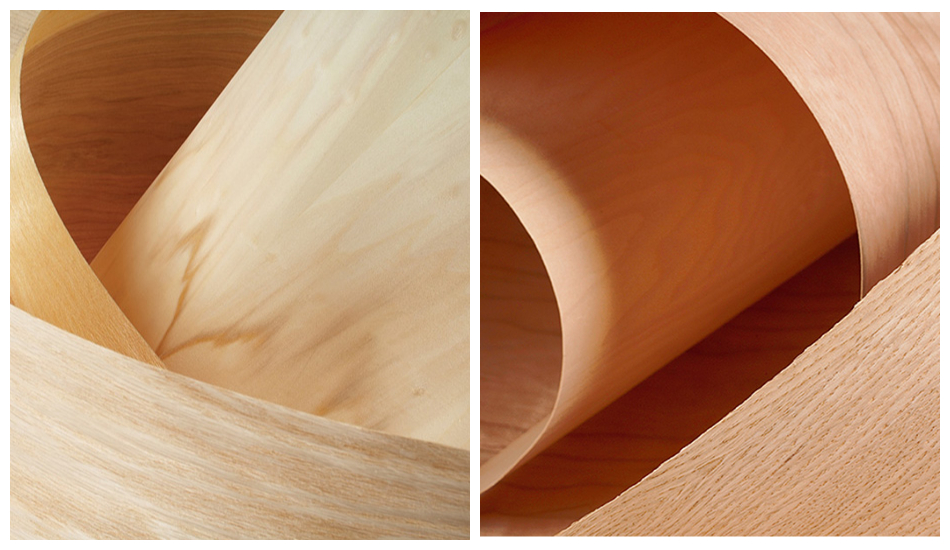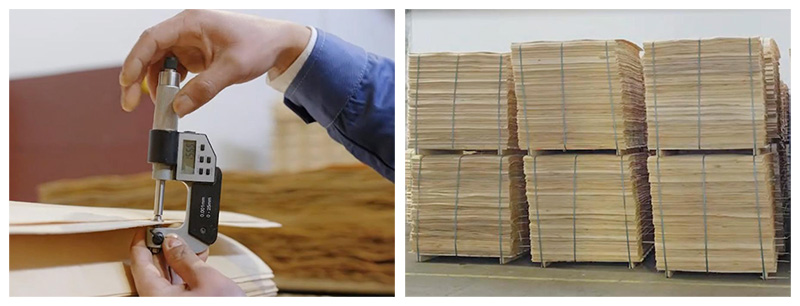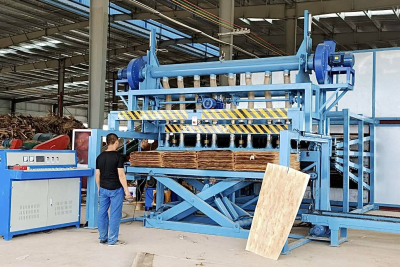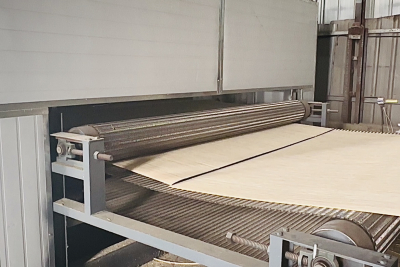Why Veneer Thickness Even Matters
We work with wood every single day, and trust me, the small stuff matters. Wood veneer thickness looks simple on paper, yet it shapes the feel, the weight, the tone, and sometimes the soul of a product. A wood veneer sheet might look thin, yet it holds a story. When we dive into thickness, we also explore grain movement, moisture shifts, and that sweet spot where beauty meets engineering.
So we want to take you behind the scenes. We want to show you how we look at veneer thickness in our shop. I also want to keep things real easy and sometimes playful. Woodwork can be technical, but it never has to be boring.
What Wood Veneer Thickness Means in Real Life
Wood veneer thickness describes the distance between the two faces of the sheet. Simple right? Still, it controls everything from bending strength to finish quality. We always picture veneer like a guitar string. Too thin and it snaps. Too thick and it stiffens the whole instrument.
Typical Thickness Range
Here is the range we see most often
· 0.2 mm for ultra-thin
· 0.3 to 0.6 mm for general panel work
· 0.8 to 1.2 mm for premium projects
· 2 mm and up for heavy-duty builds
Why This Range Works
· Thin veneer bends with less stress
· Medium veneer balances cost and looks
· Thick veneer handles sanding better
· Ultra-thick veneer fakes the solid wood feel
If you sand often or run sheets through a fast line, you should never go ultra-thin. It just breaks your heart and your wallet.
Every wood veneer sheet reacts to heat, humidity, and pressure. We often feel these changes before we measure them. When the veneer gets thin, it dries faster. When it goes thick, it needs longer heat exposure. We use a Veneer Drying Machine to keep moisture levels stable. That keeps the thickness predictable. Wood shrinks as it dries and expands when it gets wet. So the machine helps us hold that ideal state where the veneer stays flat and happy.
Key Factors That Hit Thickness
· Wood species
· Grain direction
· Water content
· Cutting method
· Pressing temperature
How Thick Is Wood Veneer for Furniture Makers
Furniture builders use specific thicknesses depending on the vibe they want. Thin veneer feels delicate, elegant, and flexible. Thick veneer feels bold, heavy, and close to solid wood.
Popular Furniture Thickness
· 0.5 mm for cabinets
· 0.8 mm for tables
· 1.2 mm for luxury panels
· 2 mm for acoustic boards
The-thicker-you-go rule
More thickness = more sanding freedom
Less thickness = more cost savings
How Thick Is Wood Veneer for Decorative Work
When we move into décor, the rules change. Designers want curves, edge wraps, patterns, marquetry, and color consistency. Veneer thickness becomes the quiet hero behind the art.
Ideal Thickness for Design Work
· 0.2 mm for sharp curves
· 0.3 mm for inlay
· 0.5 mm for wide flat features
· Up to 1 mm for strong contrast patterns
Thin veneer slices like paper. Thick veneer trims like leather. We work with both, and each one has its own personality.
How Cutting Methods Affect Veneer Thickness
We cut veneer in several ways, and every method impacts thickness accuracy.
Rotary Cutting
· Fast
· Cheap
· Gives wide sheets
· Thickness runs uniform
Slicing
· Premium look
· Strong grain
· Slight variation in thickness
· Ideal for high-end builds
Half Round
· Hybrid pattern
· Super smooth
· Works best for medium thickness
If we chase perfect thickness, we go rotary. If we chase beauty, we slice. Life is full of trade-offs.
How to Choose the Right Wood Veneer Sheet Thickness
Choosing veneer thickness feels tricky at first, so I made a simple guide.
Ask These Questions
1. How much sanding do you expect
2. How much bending do you need
3. How long should the product last
4. How visible should the grain look
5. How strong is the base panel
Easy Rules for Quick Choices
· Pick a thin veneer for curves
· Pick medium veneer for doors
· Pick thick veneer for hotel-grade panels
· Pick ultra-thick veneer for restoration jobs
If you ever feel stuck, go medium. Medium veneer almost never fails you.
The Hidden Cost Side of Veneer Thickness
Thick veneer costs more for a reason. It eats more raw wood, absorbs more glue, and weighs more in transport. Thin veneer saves money but takes more care on the line.
Cost Impact by Thickness
· Thin veneer saves raw material
· Medium veneer balances price and quality
· Thick veneer raises premium value
We find that medium thickness gives the highest return for most clients.
How We Control Thickness in Our Production Line
We keep the veneer thickness stable by controlling the feed speed, heat level, and moisture. A Veneer Drying Machine helps us keep sheets uniform and ready for gluing.
Steps We Follow
1. Measure logs
2. Cut veneer
3. Dry evenly
4. Press flat
5. Inspect and sort
6. Pack with spacers
We test thickness on every batch. We look for ±0.02 mm accuracy when needed.
Fun Real World Examples From Our Shop
We love stories, so here are a few
· A client needed 0.2 mm veneer for a yacht curve that looked impossible at first
· Another client wanted 1.5 mm veneer so he could carve light patterns
· A hotel chain asked for 0.8 mm veneer to handle wear without losing the grain
When thickness fits the job, the build feels easy.
Final Thoughts: Veneer Thickness Shapes Everything
Wood veneer thickness does more than you think. It shapes feel durability and overall performance. When we choose the right thickness, we make the work smoother and the result better. A wood veneer sheet may look simple, yet it carries engineering beauty and personality.
Thickness is not just a measurement. It is the secret language of woodworkers. Once you understand it, you see wood in a whole new way.






